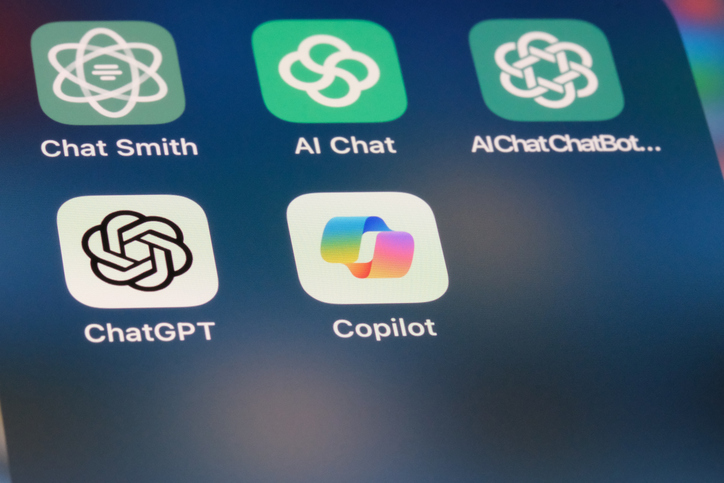When AI Enters the Group Chat: What OpenAI’s Next Move Really Signals for Global Business
There’s a moment every executive eventually encounters a quiet sense that the tools around us are no longer “tools” at all, but collaborators shaping how we think, plan and operate. The arrival of AI-assisted group conversations marks exactly that kind of shift. It isn’t flashy, and it certainly didn’t arrive with Silicon Valley fanfare, but its implications are enormous.
ChatGPT, for all its cultural visibility, has mostly lived in the intimate space between one person and one machine. Now that the model is stepping into shared conversations, the dynamic is fundamentally different: not a private assistant, but a participant inside the room. For leadership teams trying to understand where AI is going or what it will demand this is the pivot point worth watching.
The Quiet Reinvention of Collaboration
Executives have spent years drowning in collaboration platforms video calls here, project threads there, comments layered over documents like geological strata. But AI inside a shared conversation changes the gravitational centre of all of it. The flow of discussion, the speed of decision-making, even the tone of meetings shifts when a model can generate options, surface data, or challenge assumptions in real time.
What matters most is how this changes behaviour. When people work inside a group chat that includes a model capable of generating insights on demand, decision-making subtly accelerates. Hesitation drops. People outsource the “first draft” of ideas without even noticing. And once behaviour shifts, entire organisational workflows follow.
That’s the real story not the feature itself, but the human response to it.
The Business and Financial Stakes Behind AI-Enabled Collaboration
It’s easy to mistake this for a consumer feature. It isn’t.
Group-enabled AI fundamentally strengthens the economics of generative-AI platforms.
A Shift in Monetisation Strategy
Once a tool becomes multi-user, the value proposition changes too. A company doesn’t pay for one assistant anymore — it pays for a shared cognitive layer that stretches across teams, departments and projects. That repositioning opens the door to enterprise-grade pricing, deeper retention and long-term contracts.
Investors understand this pattern well: the moment a technology moves from individual productivity to collective workflow, its lifetime value spikes. It’s the same transformation that turned Slack and Zoom from quirky start-ups into corporate infrastructure. Group-chat AI follows the same curve — but with far higher strategic leverage because it sits at the intelligence layer, not the messaging layer.
AI as a Cost Centre and a Growth Engine
For CFOs, the arrival of AI into group spaces forces new budgeting questions.
How many use-cases will spin out from a single team? How much shared data will be produced, stored and re-queried? What governance budget grows alongside this?
But there’s a counterweight: companies that integrate AI collaboratively typically see productivity gains that don’t require additional headcount. Analysts at major financial institutions have already begun modelling “AI diffusion savings,” estimating that collaborative AI tools can reduce project cycle-times by double-digit percentages in certain knowledge-based sectors. Those savings compound at scale.
When Shared AI Meets Shared Liability
If AI is joining the group chat, it’s also joining the risk register.
Where Governance Gets Complicated
In private chats, data responsibility is straightforward. In multi-person environments, it isn’t. You get a tangle of new questions:
Who uploaded what?
Which part of an AI-generated insight influenced a decision?
Does shared input constitute shared ownership of the output?
Regulators have been circling these issues for two years. In Japan, for example, the Ministry of Internal Affairs and Communications updated its guidance on AI transparency and data retention, emphasising the need for clear responsibility allocation when multiple users contribute inputs. In Europe, the AI Act categorises collaborative systems as higher-risk depending on context. And in the U.S., federal agencies have been pushing for clearer auditability of AI-assisted decision tools, especially in finance, healthcare and employment.
This isn’t hypothetical. The moment an AI-generated insight influences a collective business decision, oversight becomes a shared burden.
Privacy, Jurisdiction and the Cross-Border Puzzle
International teams now face additional complications: a project chat may include employees from Tokyo, Seoul and London, each under a different data-protection regime. A single shared document especially one containing sensitive, proprietary or personal data can trigger overlapping compliance requirements.
Executives can no longer treat AI as a plug-in. It’s becoming a regulated participant.
The Strategic Play for CEOs: Integration With Intention
AI in group chats isn’t a convenience; it’s a cultural and operational shift.
Leaders who dismiss it as a novelty misunderstand its trajectory.
Define How AI Should Behave Inside Your Organisation
Is the model allowed to propose creative solutions?
Should it be used for early-draft ideation but not final decisions?
Does it join strategy sessions, or only operational ones?
These seem like soft questions, but they shape corporate culture. A company that lets AI speak freely in collaborative spaces becomes an organisation that iterates faster but it may also become one that overlooks the risk of over-automation.
Build a Governance Model Before You Scale
Audit logs, retention rules, access hierarchies they all need to exist before teams normalise this kind of tool. The companies that learned this early with Slack and Teams were the ones that avoided chaotic shadow-communication channels. AI requires the same discipline, multiplied by its decision-making power.
Prepare for Competitive Pressure
As collaborative AI becomes standard, the gap between organisations that adopt it and those that don’t will widen quickly. Strategy cycles will compress. Product teams will iterate faster. Cross-border projects will run with fewer delays.
The competition won’t be “who uses AI” — but “who uses it together, effectively.”
The Next Phase of AI: From Assistant to Participant
When we look back in a decade, the arrival of AI into group conversations may end up being a far bigger milestone than real-time image generation or improved reasoning. It marks the end of AI as a solitary tool and the beginning of AI as a social, shared and influential part of organisational life.
The leaders who prepare for that shift now financially, legally and operationally will be the ones best positioned for the next chapter of digital transformation.
Navigating AI in the Workplace: Key Questions Answered
How should companies control access to shared AI conversations?
Organisations should treat AI-enabled group chats like any enterprise communication system: restrict access based on roles, establish permission tiers and enable audit logging. This ensures that sensitive information shared in collaborative spaces aligns with existing data-governance policies.
Can AI-generated suggestions in group chats influence liability for business decisions?
AI cannot hold responsibility — people do. But because group chats generate shared input, companies must document decision-making processes clearly. It’s not about assigning blame; it’s about maintaining transparent records that show where human judgment was exercised.
What industries stand to benefit most from collaborative AI tools?
Any field reliant on cross-team knowledge sharing — consulting, finance, product development, research, legal — can see significant efficiency gains. The advantage is not speed alone, but the ability to synthesise complex information quickly across departments.
How should CEOs budget for collaborative AI?
Executives should expect rising costs for storage, compute usage and governance, but also account for productivity gains. The most accurate budgeting models treat AI as part of operational infrastructure, not discretionary spending.














